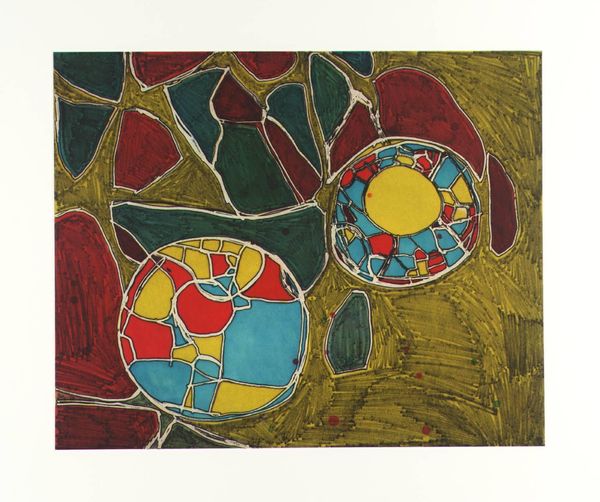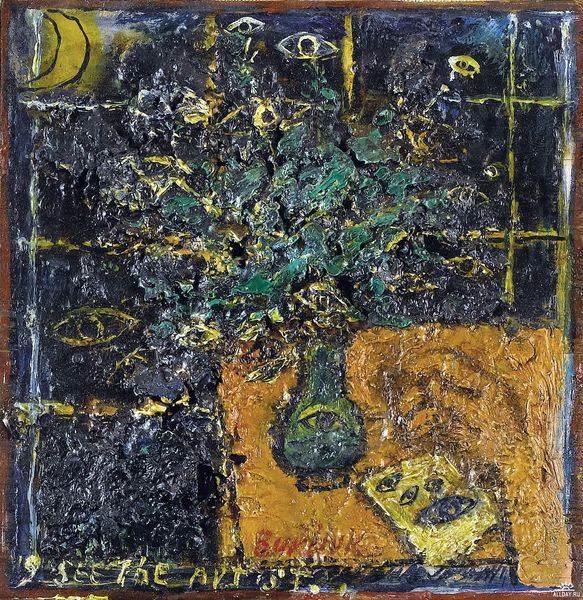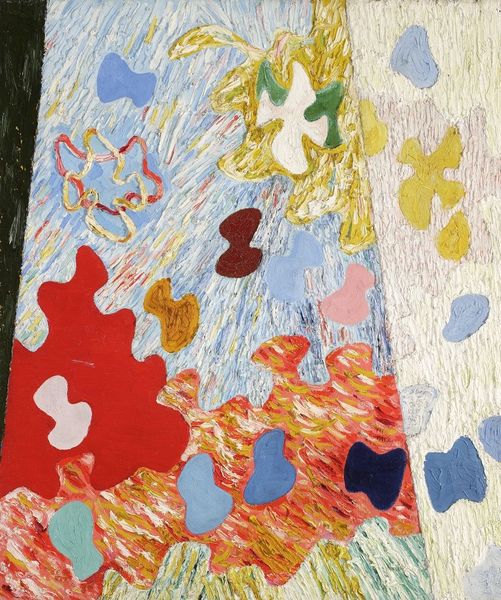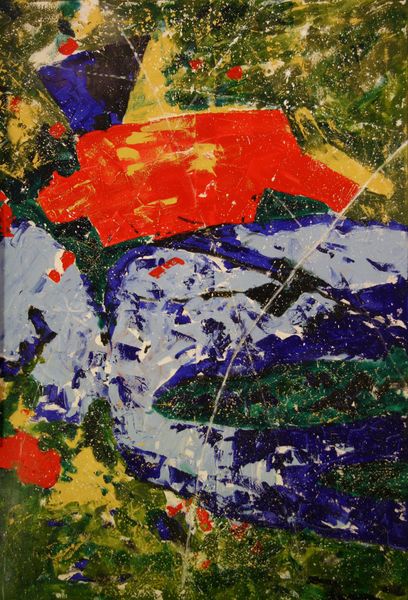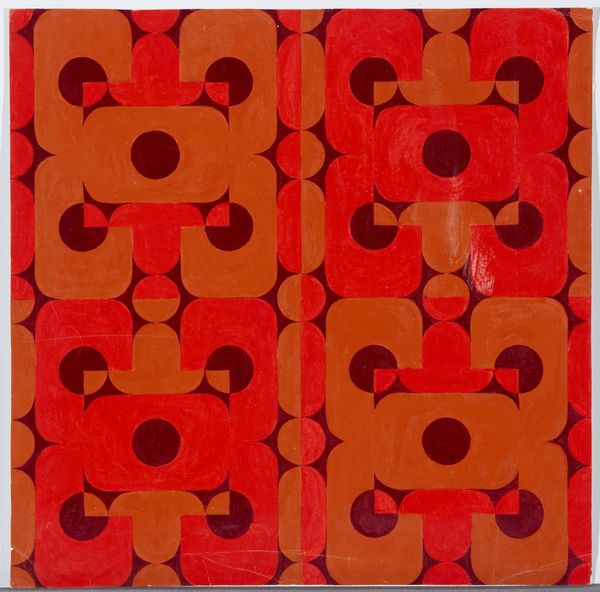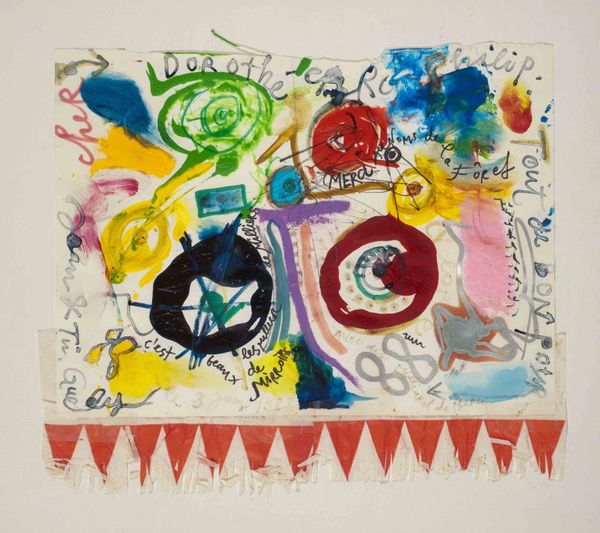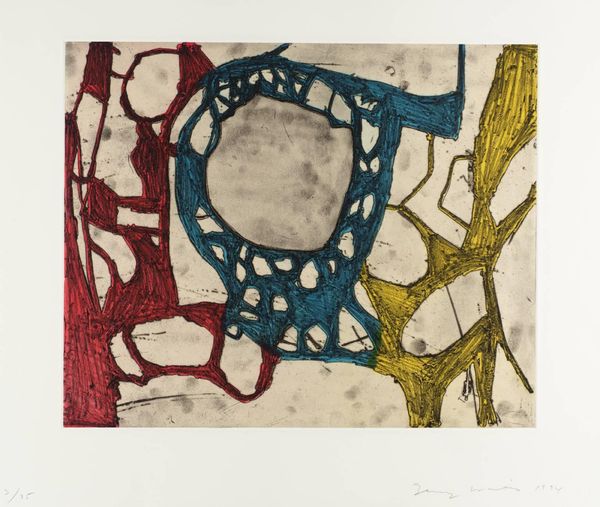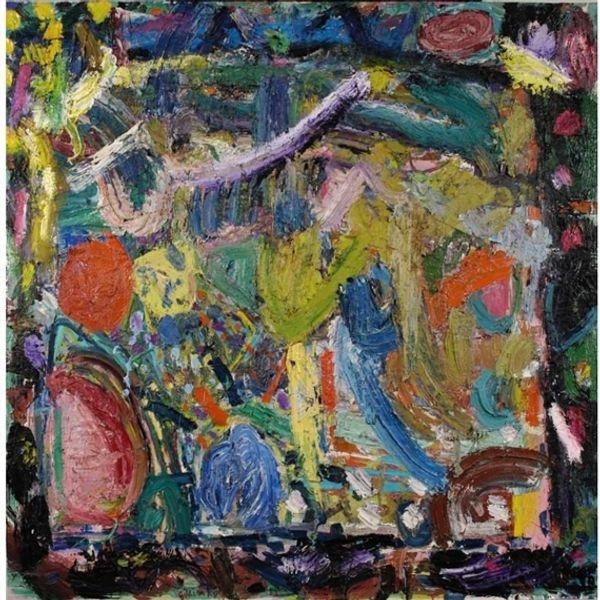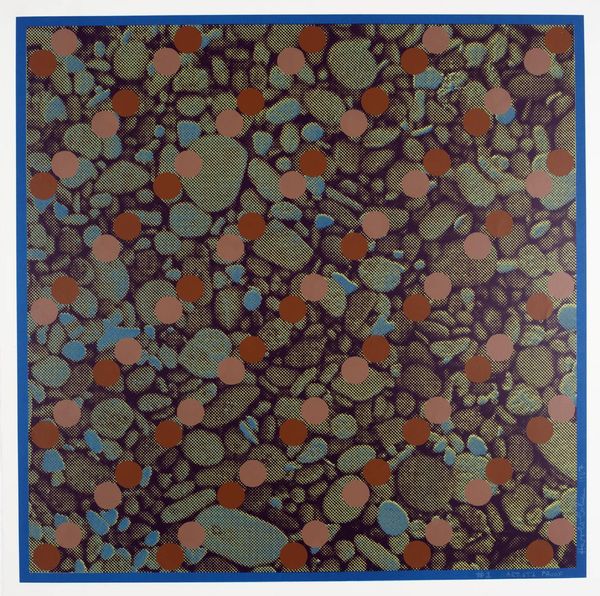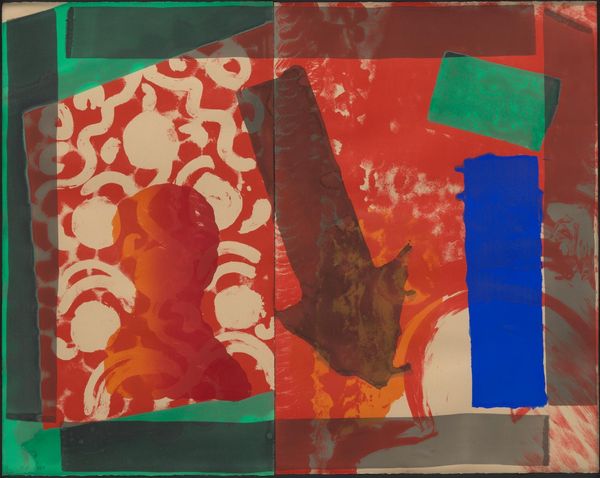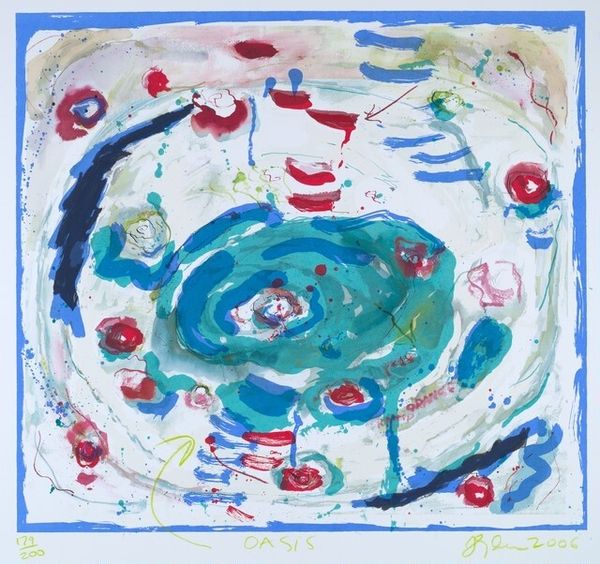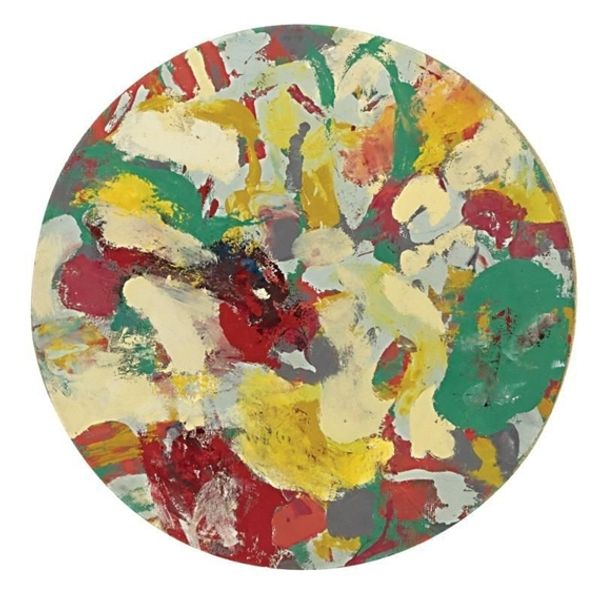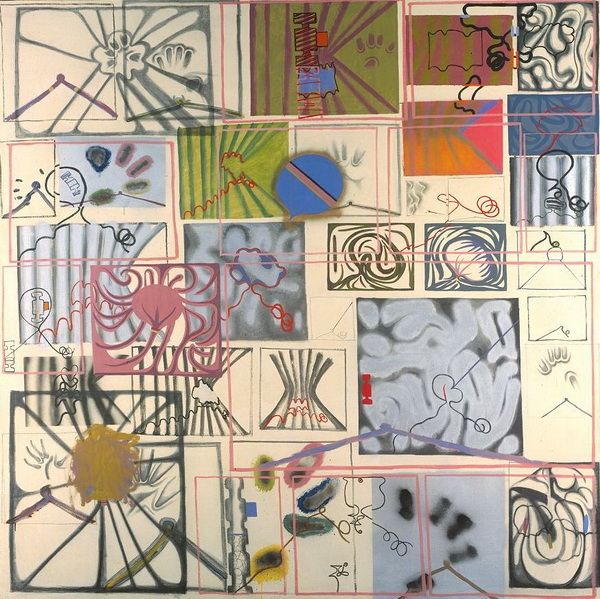
Dimensions: support: 1966 x 1975 mm
Copyright: © Joe Tilson. All Rights Reserved, DACS 2014 | CC-BY-NC-ND 4.0 DEED, Photo: Tate
Editor: Joe Tilson's "Liknon 3" is quite striking, isn't it? There's a central still life, surrounded by what looks like a deconstructed pattern. The colours are so bold. What's your take on this piece? Curator: It sings, doesn’t it? To me, it’s all about layers, both visual and conceptual. Tilson was deeply inspired by classical mythology. Notice the "Liknon" itself – a winnowing fan, a symbol of purification in ancient rites. It’s about separating the wheat from the chaff, visually and spiritually. What do you make of that? Editor: So it's not just about the pleasing shapes and colours? Curator: Never just that, is it? It's a bit of a puzzle, a visual poem waiting to be deciphered. That central image feels almost like a sacred offering. Perhaps the artist is inviting us to contemplate what truly nourishes us. Editor: I see what you mean. It makes me want to delve deeper into mythology and art history to fully appreciate this. Curator: Exactly! That's the magic, isn't it? Art inviting us to explore.
Comments
Join the conversation
Join millions of artists and users on Artera today and experience the ultimate creative platform.
tate 8 months ago
⋮
Tilson, who works in both England and Italy, has known the Mediterranean world for almost fifty years. The materials and handling of his early paintings displayed a sensuousness roughness. From his Pop period onwards formal structures were prominent in his work, and in the 1970s the four Elements became a major theme. 'Liknon 3' links all these concerns. In ancient Greece the 'liknon' was the winnowing fan used to throw grain into the air to separate chaff from wheat. In each painting in this series a still life of fruits of the earth is surrounded by panels inspired by painted imitations of marble. Tilson sees art as 'an instrument of transformation to put yourself in harmony with the world and with life'. Gallery label, September 2004
